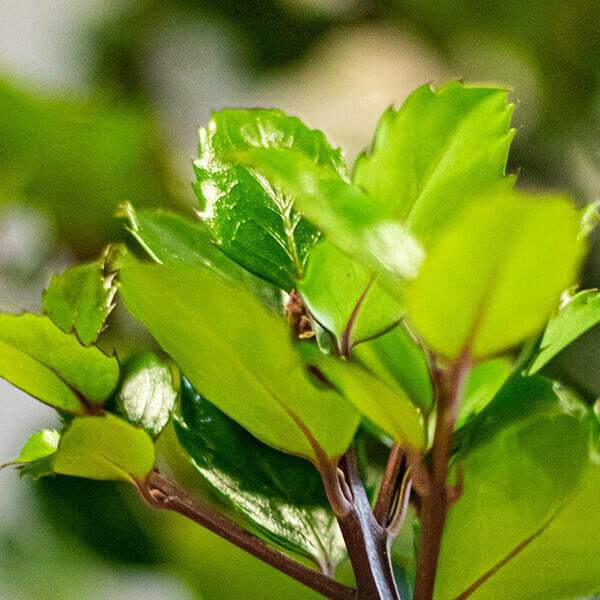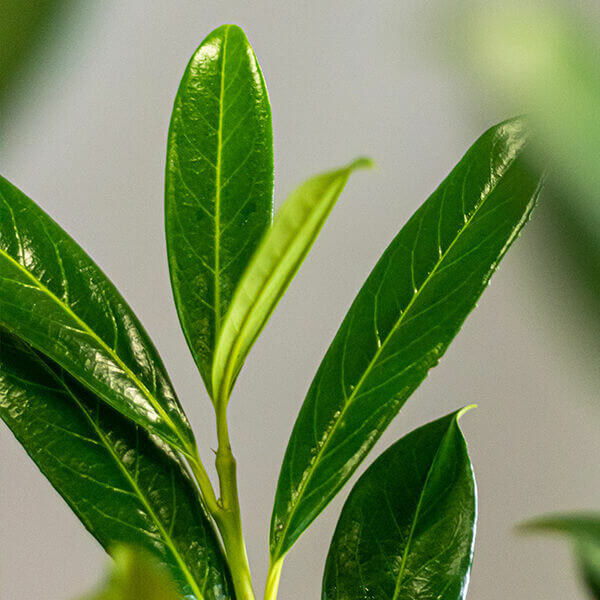Best Hedging Plants For Smooth Trimming
Enhance your garden's appeal with lush hedge ranges such as Yew (Taxus), Thuja, Laurel, Photinia, and Bamboo, commemorated for their structural integrity and ecological advantages.
Yew and Thuja provide evergreen coverage and winter strength, while Laurel provides quick growth and broad, aromatic leaves.
Photinia includes seasonal charm with its dynamic red foliage, and Bamboo provides a low-maintenance, serene atmosphere.
These hedges improve air quality, minimize sound, and create tranquil, private areas.
Proper planting, spacing, and maintenance guarantee energetic development and environmental harmony.
Check out how these lavish varieties can elevate your garden's charm and wellness.
Secret Takeaways
Transform Your Garden With Lush Hedge Varieties
- Select Yew for its dense, evergreen development and unequaled durability.
- Opt for Laurel for its fast growth and broad leaves, ensuring fast personal privacy.
- Pick Photinia for its vibrant seasonal foliage, which turns a striking dark red.
- Use Bamboo for a low-maintenance, winter-hardy hedge with aesthetic appeal.
- Area plants 2-3 per meter and prune regularly for ideal growth and health.
Popular Hedge Plants
When transforming a garden with rich hedge ranges, it's necessary to consider popular hedge plants such as Yew, Thuja, Laurel, and Photinia due to their unique characteristics and benefits.
Yew (Taxus) is highly esteemed for its longevity and thick, green development, making it a prime option for sustaining landscapes.
Thuja is kept in mind for its evergreen foliage and robust winter season strength.
Photinia includes seasonal vibrancy with red leaves that darken gradually, developing vibrant visual appeal.
Laurel provides fast growth and fragrant, broad leaves, ideal for fast personal privacy.
In Addition, Bamboo is an excellent option for atmosphere, offering a low-maintenance, winter-hardy option that enhances the garden's visual with its classy, swaying walking canes.
These selections cater to a variety of horticultural requirements and choices.
Benefits of Garden Hedges
Garden hedges offer a multitude of advantages, making them an important addition to any landscape. These natural barriers are affordable to implement and supply substantial wind security, enhancing air blood circulation and adding to noise reduction. The thick foliage of hedges like Thuja and Beech guarantees personal privacy by blocking visibility, developing a peaceful and secluded environment.
Hedges also play an essential function in microclimate policy, providing a steady environment that fosters plant development and reduces temperature level fluctuations. Their detailed leaf structures filter contaminants, enhancing air quality and contributing to a much healthier garden community.
Additionally, hedges master sound reduction, absorbing and deflecting sound waves to lower ambient noise levels. This dual performance of offering both visual and acoustic personal privacy boosts the overall harmony and aesthetic appeal of any garden.
Planting and Upkeep Tips
For an effective hedge, meticulous preparation of the planting area is crucial. Guarantee the soil has appropriate pH and drainage to support strong root development.
Space the plants appropriately for the picked species. Water the hedge regularly during its initial development stage, changing as needed with seasonal changes.
Execute a systematic insect control and illness prevention strategy, using chemical or organic treatments when needed. Frequently inspect for aphids, mites, and fungal infections.
Apply mulch to retain moisture and reduce weeds. Seasonal pruning promotes thick growth and air blood circulation, necessary for plant health.
Following these standards will assist you cultivate a dynamic, well-kept hedge that improves the charm of your garden.
Spacing and Trimming Standards
Spacing and Cutting Standards
Appropriate spacing and trimming are essential for cultivating healthy, visually appealing hedges. Appropriate spacing makes sure each plant receives sufficient nutrients, light, and airflow.
Follow these standards for optimal hedge upkeep:
- Spacing: Position hedge plants 2-3 plants per meter to encourage robust development.
- Pruning Strategies: Regular pruning is important for maintaining wanted hedge height and shape. Trim new development in summertime and cut back older wood during winter.
- Seasonal Care: Adjust cutting techniques and schedules according to seasonal requirements to ensure plant health.
- Hedge Height: Regularly display and trim to maintain the wanted hedge height and achieve consistent looks.
Sticking to these actions will ensure your hedge flourishes, boosting both the appeal and performance of your garden.
Picking the Right Hedge
Picking the Right Hedge
Selecting the suitable hedge includes examining factors such as mature height, foliage density, and ecological resilience. Effective hedge plant selection requires understanding each species' development attributes and site-specific adaptability.
For example, Yew (Taxus) uses excellent longevity and dense growth, while Thuja is noteworthy for its winter season strength. Furthermore, thinking about upkeep requirements is vital; fast-growing types like Laurel or Privet need regular cutting, whereas low-maintenance choices like Bamboo or Ivy may be preferable for those seeking minimal upkeep.
Environmental factors such as soil type, light availability, and moisture conditions must likewise assist the choice procedure. This cautious method ensures the chosen hedges will thrive, supplying both visual and functional advantages to the garden landscape.
Shipment and Planting Guidance
To ensure your hedge plants thrive, they should be provided by specialized carriers and planted immediately upon arrival.
Follow these vital steps for successful planting:
- Soil Preparation: Improve the soil with raw material to improve drain and nutrient material.
- Planting Depth: Create a trench twice the width and equivalent to the depth of the root ball.
- Watering Techniques: Water thoroughly after planting, keeping the soil consistently damp but not filled.
- Mulching: Use a layer of mulch to retain wetness and reduce weeds.
Customer Support and Service
Given the vital role of prompt help in horticultural pursuits, our customer support team is offered 6 days a week through telephone, e-mail, and social networks to offer expert guidance and swiftly resolve any issues. Their dedication to fast action times ensures customer satisfaction by dealing with queries connected to plant health, optimum planting techniques, and maintenance schedules.

Six days a week
This extensive support group, reinforced by a stellar 9.3/ 10 client score, highlights our dedication to improving the gardening experience for each customer.
Regularly Asked Concerns
How Long Does It Take for Hedge Plants to Develop?
Hedge plants generally require one to three years to become fully established, with the exact period differing by types and growing conditions.
Reliable care throughout this critical duration is necessary for robust development. Constant watering, watchful weed control, and suitable fertilizer application are critical in promoting strong root development.
For example, fast-growing species like Laurel may establish more quickly, while slower-growing ranges such as Yew may take longer. Persistent maintenance accelerates the facility process, resulting in dense and healthy hedges.
What Are the Best Hedge Plants for Personal Privacy?
The concern of the best hedge plants for personal privacy includes examining evergreen and deciduous alternatives.
Evergreen hedges like Thuja, Laurel, and Cypress offer year-round coverage, ensuring constant privacy.
In contrast, Browse this site deciduous hedges such as Beech use seasonal personal privacy, shedding leaves in cooler months.
Key maintenance pointers for personal privacy hedges include routine cutting, fertilizing in spring, and appropriate spacing-- generally 2 to 3 plants per meter.
Additionally, constant watering and persistent weed elimination are important for promoting healthy, dense development.
Can Hedge Plants Draw In Wildlife to My Garden?
Yes, hedge plants can attract wildlife to your garden by offering essential advantages like shelter, food, and nesting sites, therefore improving regional biodiversity. Yew, holly, and laurel are excellent for bring in birds, while ivy supports a variety of bugs.
However, it is essential to keep in mind that there are some disadvantages, such as increased upkeep to manage insects and routine maintenance. Carefully picking and maintaining hedge ranges can help stabilize these benefits and disadvantages, ultimately cultivating a vibrant and sustainable environment in your garden.
Are There Any Flowering Hedge Plants Available?
Yes, there are flowering hedge plants offered that can boost the appeal of your garden.
For instance, Elaeagnus, likewise known as Olive Willow, produces aromatic white flowers in the fall, including a touch of elegance.
Photinia, another popular choice, showcases vibrant red leaves that grow into an abundant green, creating a vibrant visual result throughout the seasons.
To make sure these plants thrive, it's vital to practice appropriate pruning strategies and seasonal upkeep, such as cutting new growth in the summertime and cutting down in the winter season.
These measures will help maintain the health and aesthetic appeal of your flowering hedges.
How Do I Prevent Bugs in My Hedge Plants?
To prevent insects in hedge plants, use natural bug control approaches and maintain proper hedge care. Present useful pests like ladybugs, which victimize harmful bugs, to develop a well balanced community.
Frequently inspect your hedges for indications of problem and without delay get rid of any afflicted parts to avoid the spread. Make sure the health of your hedges by using balanced fertilizers and providing sufficient water.
Make use of mulching to maintain soil wetness and correct spacing to reduce plant stress and promote robust growth. These practices collectively assist in minimizing pest problems and preserving a healthy hedge.
Conclusion
In essence, selecting the best hedge varieties such as Yew, Thuja, and Laurel can transform any garden into a tranquil sanctuary. These plants supply year-round plant, improve aesthetic appeal, and offer practical benefits like noise reduction and wind protection.
Proper planting techniques, precise spacing, constant watering, and seasonal cutting are essential for optimum development.
Trustworthy shipment services and professional client support make sure a smooth experience from purchase to planting, making it simpler than ever to elevate your outside space.
Garden hedges offer a plethora of advantages, making them a valuable addition to any landscape. These natural barriers are cost-effective to carry out and offer significant wind protection, boosting air blood circulation and contributing to noise decrease. The dense foliage of hedges like Thuja and Beech ensures personal privacy by obstructing presence, creating a tranquil and secluded environment.

Pruning Methods: Regular pruning is important for preserving desired hedge height and shape. Trim brand-new development in summertime and cut back older wood during winter.